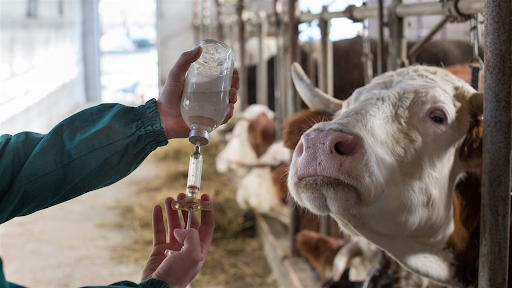
Cold weather often makes joint pain feel sharper and more persistent. Many people report increased stiffness, slower movement, and a deep ache that arrives as soon as temperatures fall. While the exact cause differs from person to person, what is clear is that winter can be tough on knees, hips, fingers, and other weight-bearing areas. The good news is that there are practical steps you can take to stay comfortable and protect your joints throughout the colder months.
Joint pain can also feel more noticeable as people try to stay active or maintain a healthier lifestyle during winter. For example, someone who plans to buy Wegovy weight loss injection UK during their weight management journey may also want to improve mobility so they can exercise comfortably. Addressing joint pain early supports overall fitness, weight balance, and long-term well-being.
This guide walks you through the most common reasons joint pain worsens in the cold and offers reliable, research-backed tips for relief.
Why Colder Weather Can Trigger Joint Pain
Lower Temperatures May Affect Joint Fluid
Each joint contains synovial fluid that cushions and lubricates movement. When temperatures drop, this fluid can thicken slightly. This tends to reduce flexibility and may increase stiffness. People with arthritis often feel this more strongly because the protective tissues in their joints are already compromised.
Changes in Pressure Can Influence Sensitivity
Shifts in barometric pressure affect joint tissues. Lower pressure can make tendons and ligaments expand a little. This extra pressure around joints can increase discomfort. Although the science is still evolving, many people with long-term joint issues notice these changes within hours.
Muscles Become Tighter in the Cold
Cold weather makes muscles contract to preserve heat. Tighter muscles reduce joint range of motion and increase strain. This tension can also make old injuries feel worse as support structures pull more firmly on the joint.
Reduced Activity Levels Play a Big Role
Shorter days and colder conditions often lead people to move less. This lack of activity means the joints receive less lubrication from regular movement. Over time, stiffness increases and general mobility decreases. Individuals working on healthier habits or planning to buy Wegovy weight loss injection UK may find that reduced winter activity affects both weight and joint comfort.
Common Winter Joint Pain Symptoms to Watch For
Greater Morning Stiffness
Winter mornings can feel particularly uncomfortable. Stiff joints make it harder to start the day, and the discomfort can last longer than usual.
Deep, Aching Pain
Cold weather pain is often described as a heavy, deep ache rather than a sharp or sudden sensation. This is linked to slower circulation and tightened tissues.
Reduced Flexibility
Joints may feel like they struggle to bend fully. People often notice this in their knees when walking up stairs or in their hands when gripping objects.
Increased Sensitivity in Old Injuries
If you have had a sprain, fracture, or dislocation before, the colder months may reactivate that sensitivity.
How to Protect Your Joints in Cold Weather
Stay Warm Enough to Support Circulation
Keeping joints warm is one of the simplest and most effective ways to reduce pain. Heat helps blood vessels expand and encourages smoother movement.
Tips to Stay Warm
- Wear layered clothing that traps heat around your joints.
- Use gloves, knee warmers, or thermal socks to protect sensitive areas.
- Warm up indoor spaces using safe heating methods.
Why Warmth Helps
Warm muscles support healthy joint function. They move more easily and place less stress on connected tissues. This is especially important for people who want to maintain good mobility while working on weight management goals, such as those who plan to buy Wegovy weight loss injection UK.
Keep Moving Even in Winter
Low-Impact Exercises for Joint Support
Movement improves synovial fluid flow and strengthens the muscles that support your joints. Light activity also helps manage inflammation.
Some helpful options include:
- Brisk walking
- Swimming or water aerobics
- Indoor cycling
- Yoga or gentle stretching routines
- Pilates for core and posture support
Create a Simple Winter Activity Plan
Aim for activities you can maintain indoors during colder weather. This reduces the chance of skipping exercise because of icy conditions or shorter daylight hours.
Use Heat Therapy to Ease Stiffness
How Heat Helps
Heat increases blood flow and relaxes tight muscles. It can also reduce the perception of pain.
Ways to Use Heat Therapy
- Warm baths
- Heating pads
- Hot water bottles
- Heated blankets
- Warm compresses on painful joints
Apply heat for about 15 to 20 minutes. Always use a safe temperature to avoid burns or skin irritation.
Stretch Gently Throughout the Day
Why Stretching Works
Regular stretching keeps joints lubricated and improves flexibility. It also reduces tension in surrounding muscles.
Easy Stretching Ideas
- Slow arm circles
- Gentle hamstring stretches
- Hip flexor stretches
- Ankle rolls
- Light shoulder mobility exercises
Stretching first thing in the morning and again before bed can reduce stiffness significantly.
Lifestyle Changes That Make a Difference
Maintain a Healthy Weight
Excess body weight places extra pressure on weight-bearing joints. Knees, hips, and lower back carry more load, especially during colder months when movement often decreases. A modest weight reduction can reduce joint strain and improve daily comfort.
Many people also explore weight management medications as part of their health plan and may consider options like buying Wegovy weight loss injection UK. Supporting weight control tends to reduce inflammation and may help improve joint mobility over time. If you pursue this route, it should be done under proper medical guidance.
Improve Your Diet for Joint Health
Foods That Support Healthy Joints
- Fatty fish like salmon for omega-3 fats
- Leafy greens for antioxidants
- Olive oil for healthy fats
- Berries for natural inflammation control
- Nuts and seeds
- Whole grains
Stay Hydrated
Good hydration helps maintain joint lubrication. In winter, people often drink less water without realizing it. Aiming for consistent water intake can support your joints just as much as it supports your energy levels.
Boost Vitamin D and Calcium Intake
Winter means less sunlight, which reduces the body’s natural vitamin D production. Low vitamin D levels affect both bone and muscle health.
Sources of Vitamin D
- Moderate sun exposure when available
- Fortified dairy products
- Oily fish
- Supplements if recommended by a doctor
Calcium is equally important for bone strength. Low levels can worsen joint issues and increase stiffness.
Protect Your Joints with Proper Posture
Why Posture Matters
Poor posture increases strain on joints and muscles. In cold weather, people often hunch their shoulders or curl forward to stay warm, which puts more tension on the neck, back, and spine.
Posture Tips
- Sit with your feet flat on the ground
- Keep your back straight and shoulders relaxed
- Use supportive chairs
- Avoid leaning over devices for long periods
Stay Consistent with Medication or Treatment Plans
People with arthritis or chronic joint conditions often take medication to manage symptoms. Staying consistent during the winter months can reduce flare ups.
Always follow medical advice about anti-inflammatory medications, joint injections, or pain relief strategies. You may also find that weight management programs, such as those explored by individuals planning to buy Wegovy weight loss injection UK, support long-term joint health by reducing pressure on the knees and hips.
Natural Remedies That May Help
Warm Baths with Epsom Salt
Epsom salt baths help relax muscles and may ease tension around the joints. The warm water also encourages smoother movement after soaking.
Topical Balms and Creams
Creams containing menthol, capsaicin, or arnica can reduce discomfort by warming the area or increasing blood flow.
Gentle Massage
Massage enhances circulation and helps break down muscle stiffness. It can also support relaxation, which reduces the stress response that often makes pain feel more intense.
When to Seek Professional Help
Winter joint pain is common, but some situations require medical attention.
Contact a Doctor If You Experience:
- Redness, swelling, or sudden pain
- Difficulty moving a joint
- Pain that interferes with daily tasks
- Joint pain following an injury
- Ongoing stiffness that worsens over time
- Symptoms linked to fever, fatigue, or general illness
Early evaluation helps rule out serious issues like infections, advanced arthritis, or autoimmune conditions.
Understanding the Role of Weight in Joint Pain
Weight plays a major role in joint health. Even small changes in weight can influence how your knees, hips, and ankles feel during winter.
How Extra Weight Affects Joints
- Increases pressure on cartilage
- Raises inflammation levels
- Makes mobility more difficult
- Slows recovery from flare ups
Many people choose to improve their diet, increase activity, and explore medical options such as buying Wegovy weight loss injection UK to support their weight goals. Any reduction in weight often leads to improved comfort and better joint function.
Build a Joint-Friendly Winter Routine
Consistency is the key to reducing joint pain. Try combining several strategies to create a personalised plan. A good winter routine might look like this:
Morning
- Stretch for five minutes
- Apply a warm compress if your joints feel stiff
- Drink water to stay hydrated
Afternoon
- Take a short walk
- Do light indoor exercise
- Maintain good posture
Evening
- Warm bath or gentle heat therapy
- Relaxation exercises
- Prepare a nutrient-rich meal
A balanced routine helps support both joint health and overall wellness.
Helpful Winter Sleep Habits for Joint Comfort
Poor sleep makes pain more noticeable. Joint discomfort also disrupts rest, creating a cycle that affects your quality of life.
Tips for Better Sleep
- Keep your bedroom warm but not too hot
- Use supportive pillows to reduce pressure on joints
- Maintain a steady sleep schedule
- Avoid heavy meals late at night
- Stretch lightly before bed
Good sleep supports healing, reduces inflammation, and prepares your body for a productive day.
Should You Use Supplements for Joint Pain?
Some supplements may help, but they should complement, not replace, medical advice.
Common Options
- Omega-3 fatty acids
- Glucosamine
- Chondroitin
- Turmeric (curcumin)
- Magnesium
Always speak with a healthcare provider before adding supplements to your routine, especially if you are managing weight or considering options like the decision to buy Wegovy weight loss injection UK.
Can Weather Apps Predict Joint Pain?
Some people find that their joint pain spikes during certain weather patterns. Tracking your symptoms alongside daily weather forecasts may help you understand your triggers.
What to Monitor
- Temperature
- Humidity
- Pressure changes
- Wind chill
This simple habit may help you plan your activities and manage flare ups more effectively.
How To Reduce Joint Pain While Staying Active in Winter
If you enjoy outdoor activities, winter does not have to stop you. You can stay active safely with a few adjustments.
Tips for Safe Cold-Weather Activity
- Warm up thoroughly before stepping outside
- Wear proper footwear to avoid slips
- Dress in layers
- Choose well-lit areas if it gets dark early
- Listen to your body and rest when needed
Being active supports weight control, circulation, and muscle strength.
Conclusion
Joint pain is a common challenge when temperatures fall, but it does not have to control your daily routine. By staying warm, moving regularly, stretching gently, and taking care of your overall health, you can manage discomfort and enjoy a more active winter. Eating well, staying hydrated, and maintaining a healthy weight also strengthen your joints throughout the season. Some individuals plan to buy Wegovy weight loss injection UK as part of their weight management goals, and combining that approach with strong joint care habits supports long-term mobility.
A thoughtful winter plan that includes warmth, movement, posture care, and healthy lifestyle choices can make a real difference. With consistent habits and early attention to symptoms, you can protect your joints and stay comfortable no matter how cold it gets.






